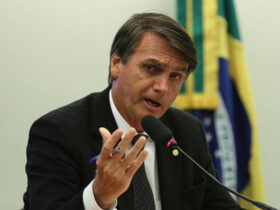
Early in his speech, while reciting a Plutarchian litany of the great generals of our age, McRaven said of General Martin Dempsey, “…he presides over the greatest change in our military since World War Two and he does so… with a song in his heart.” I immediately found myself confused. Hadn’t the biggest change since World War Two been the transition from a draft army to a post-Vietnam all-volunteer force? Or the technological revolution that took place during the Global War on Terror? What was happening in the second decade of the Twenty First Century that could dwarf these other critical shifts?
I called my personal military expert, my Dad (who is a Captain in the United States Navy) and he explained to me the shifts presently underway. I will summarize as succinctly as possible. Before the First and Second World Wars, the US military was essentially a homeland defense force with slight capability to conduct foreign expeditions (as the Spanish-American War and following decades of imperialism illustrate.) But the great pressures of the World Wars, and accompanying geopolitical shifts, forced the United States to project immensely more power in Eurasia, and the infrastructure of the military was forced to change and expand to accompany this new mission. Indeed, the early Cold War saw an institutionalization of the various commands and programs which had been borne out of World War Two. The United States military was now a global, balancing, interventionist force, and its organization supported it in its mission.
It should come as no surprise that the federal government expanded dramatically in this time as well, the so-called golden age of the Progressive Era. A large part of this growth was due to domestic politics, internal pressures, and chains of thought endemic to the United States stateside. But part of it, too, came as a corollary to the expansion and growing complexity of the military. More troops require more services; more bases require more oversight, and so on. More importantly, some of the basic social trends and methods of bureaucratic organization, at the widest level, seem to have had their historic roots in military organization before they entered the political mainstream of debate.
For example, the desegregation of the US Military preceded meaningful desegregation of American society by a decade. Similarly, the formal recognition of “Don’t Ask, Don’t Tell,” a policy which discouraged active discrimination against homosexuals in the military, preceded by several years the massive national debates on gay marriage and other sexuality issues. On the bureaucratic side, the transition to an all-volunteer force in the 1970s and 1980s came alongside the conservative movement and its massive pushback against stagnating government services, and the reinvigoration of both institutions seems to spring from a similar root. Likewise, the American military expanded more during the Civil War than it ever had before, and after the war, the first components of the modern American welfare state were established. It seems that as a state’s war fighting ability is required to increase, so grows its military and government.
What we are seeing today, then, is simply shocking and almost completely unexpected. Encumbered by sequestration, and overextended after two long counterinsurgencies that drained the energies of the American people, the US military is entering a period of dramatic downsizing and reform. The world has changed, as has the domestic situation. Going forward, the United States must continue to play its pre-eminent role in protecting the global system, but as new powers arise, it must increasingly work with and against them, managing a tenuous balance of power through conventional and unconventional means while pursuing agents of disorder in this increasingly fragmented world. In the meantime, the old blue model of the welfare state is decaying and needs a rethinking and rejuvenation.
Amidst all this, the military’s new mission lies in agility and flexibility. It must have the capacity to project force as powerfully as it has in the past seven decades. But now, it must project this force as an agile ninja, rather than a cumbersome knight. It cannot afford to have merely the most firepower in the room; the US must be able to direct that firepower in the smartest manner. So with its own budgetary downsizing, the military is making the best of its resources to accomplish its mission. Rather than shutting down any of its regional commands, it is reducing their staffs. Instead of downsizing its plethora of bases, it is combining redundant ones and expanding the capabilities of each. It is protesting vigorously against technology deals that it does not need, and that only serve the interests of the constituents of certain politicians (as the case of the F-22 so vociferously demonstrates.) The military is taking seriously the notion that it has to get leaner.
A couple weeks ago I had the dubious pleasure of sitting in on a talk, on the horrors of sequestration, by an outgoing Republican congressman. When he finished, I raised my hand and remarked: “I have heard that of all the departments, agencies, and programs in the federal government, none will be able to conduct its mission after sequestration as well as the United States military. None will adapt to new fiscal constraints better.” “I’ve never heard that,” came his gruff reply. He seemed to be more a security hawk and nationalist than a prudent thinker on military and foreign affairs.
But as other government agencies react poorly to diminished budgets, as the wages of fiscal irresponsibility plague our government, as the affairs of the world march on without caring, it is increasingly apparent that the most certain victories our government is winning at present are those emerging from the Defense Department and the military chain of command. Perhaps the model the military now exhibits will become the general model the government will emulate, as was the case in 1865 and 1945, only now it sees a contraction rather than an expansion. Perhaps in light of fiscal constraints, bureaucratic malaise, and general governmental stagnation, the US government will look to the military model of efficiency and consolidate redundant programs, decentralize regional command, and encourage efficiency and innovation so far as is possible. Perhaps a new era of smart government is upon us, as the era of smart military certainly is.







